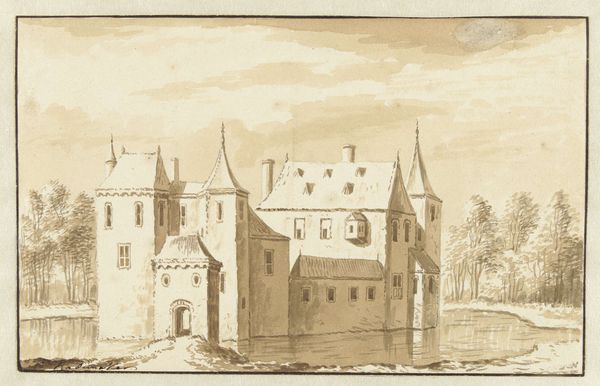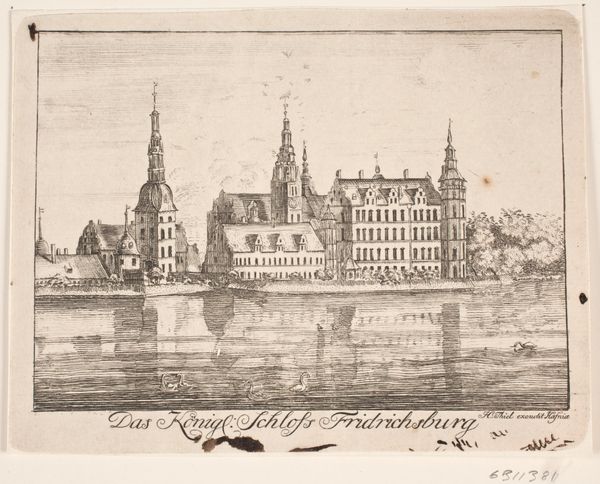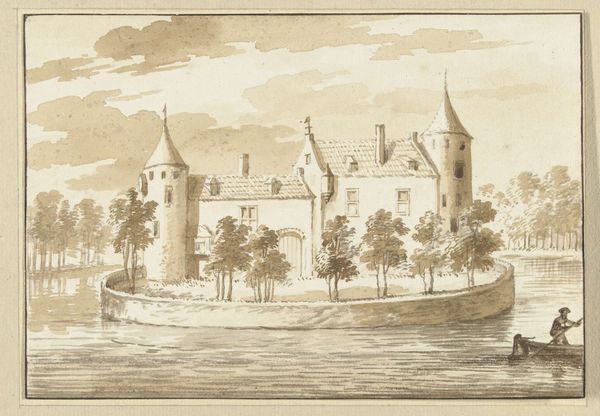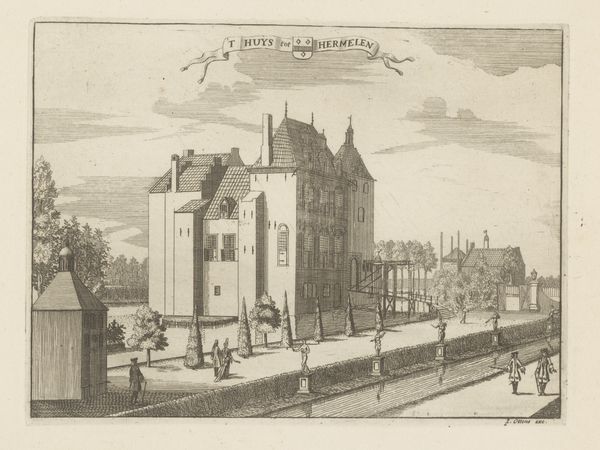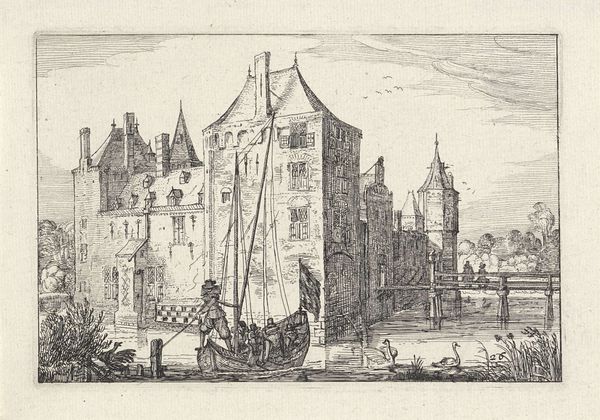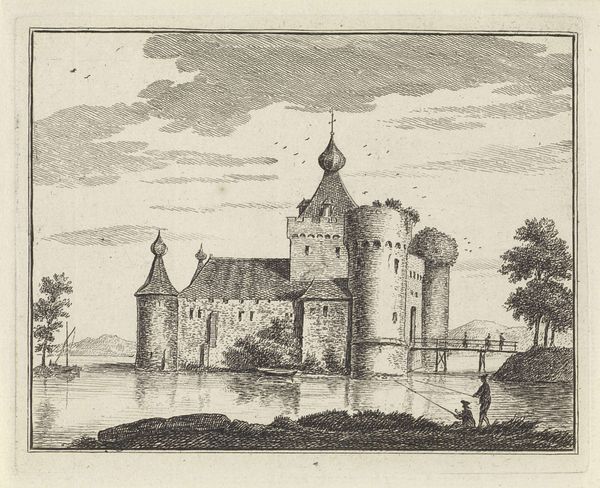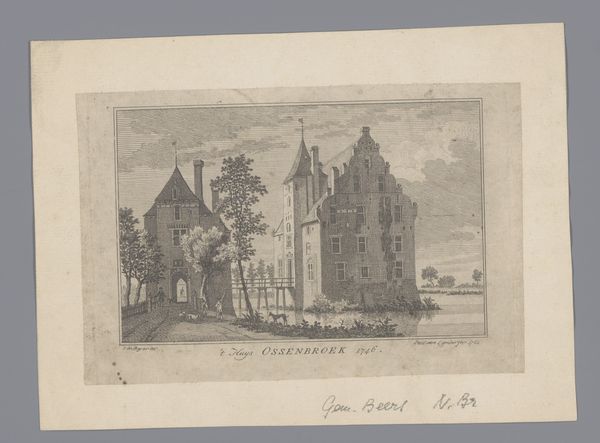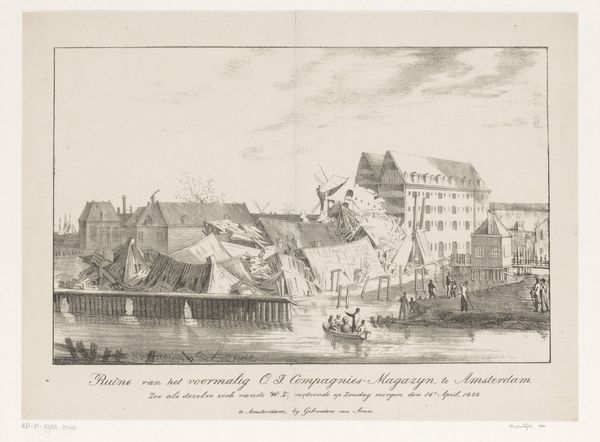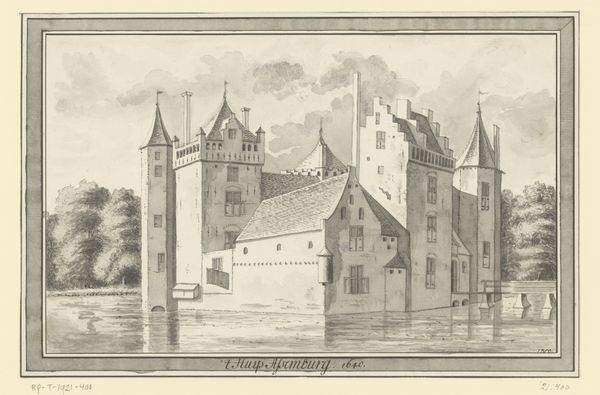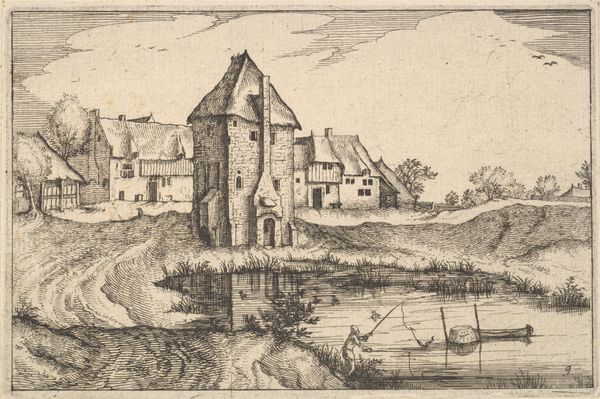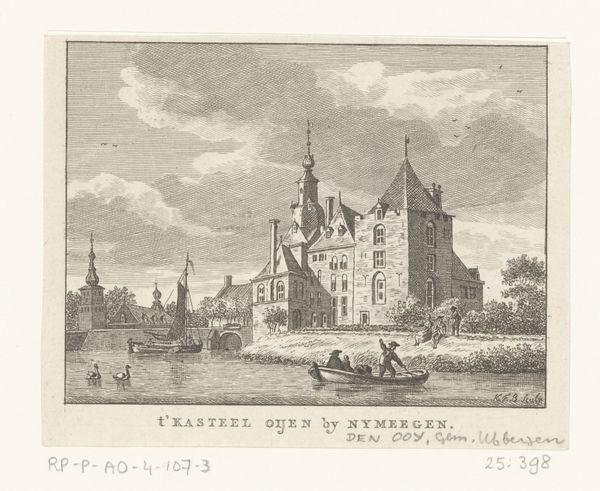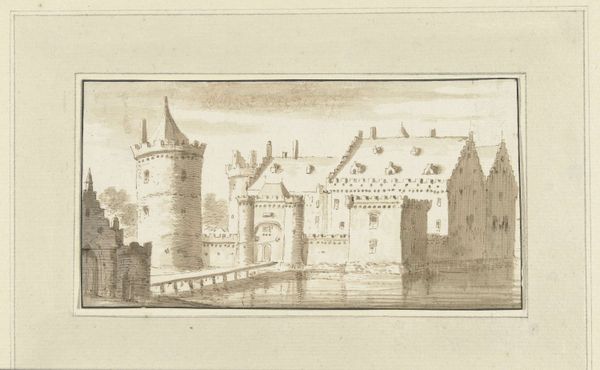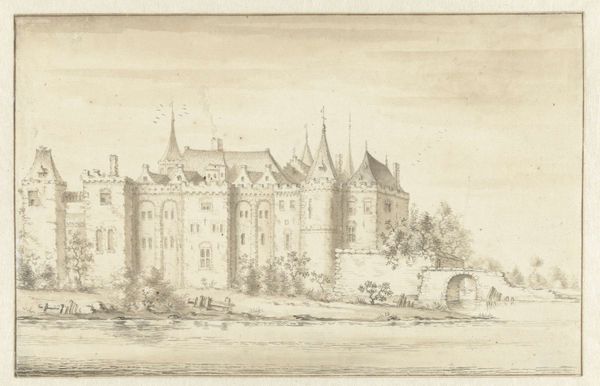
drawing, paper, ink
#
drawing
#
baroque
#
landscape
#
etching
#
paper
#
ink
#
cityscape
#
watercolor
Dimensions: height 88 mm, width 153 mm
Copyright: Rijks Museum: Open Domain
Curator: Looking at Barend Klotz's "View of the Kasteel van Ravenstein, Noord-Brabant," possibly from 1674, executed in ink and wash on paper, one can really appreciate the material culture of topographical representation. Editor: Oh, it’s whispering! That careful ink-wash captures something so ghostly about that castle reflected in the water – it's like history is exhaling right onto the page. Curator: Yes, the controlled application of ink, the way Klotz uses it to delineate form, highlights the relationship between artistic labor and documentation. What you call ghostly, I see as technical mastery—etching capturing specific dimensions. Consider how the production and availability of paper, ink, and etching tools democratized landscape imagery. Editor: And maybe even made it romantic? Think of someone on that little boat in the scene – were they documenting or dreaming as they sailed? Is there some nostalgia infused in even this detailed record keeping? Curator: The labor embedded in such documentation serves its purpose; we get detailed rendering of the built environment but also consider the role of patrons, publishers and distribution networks and its affect the perception of this imagery as we consider today how people consume media, Editor: Okay, point taken about consumerism. But just look at the buildings themselves – how they are rendered. I see the little, repeated slates and brick work, and sense how they're softened by the reflections shimmering in the water—as though everything rigid yearns for fluidity. It really transcends documentation somehow, it starts to embody feeling. Curator: I suppose the emotional connection for the modern viewer isn’t accidental. These types of renderings were certainly produced for consumption, and in that vein Klotz certainly crafted it for a specific aesthetic market. Even that soft grey tonality speaks to intentional craftsmanship to enhance the object's appeal. Editor: Maybe! What do you think someone sailing past in that tiny boat would feel if they could jump into this future and eavesdrop on us debating the documentationality versus emotionality of the view of their castle? What a mind-warp for them! Curator: Yes, truly understanding the intricacies of labor, artistic production and cultural consumption lets me really grasp both the artwork itself but also its cultural implications for later generations. Editor: Well, seeing it reminds me that buildings are just giant accumulations of longing, each stone hoping to become a little monument. Isn't it fun how it makes you think?
Comments
No comments
Be the first to comment and join the conversation on the ultimate creative platform.
